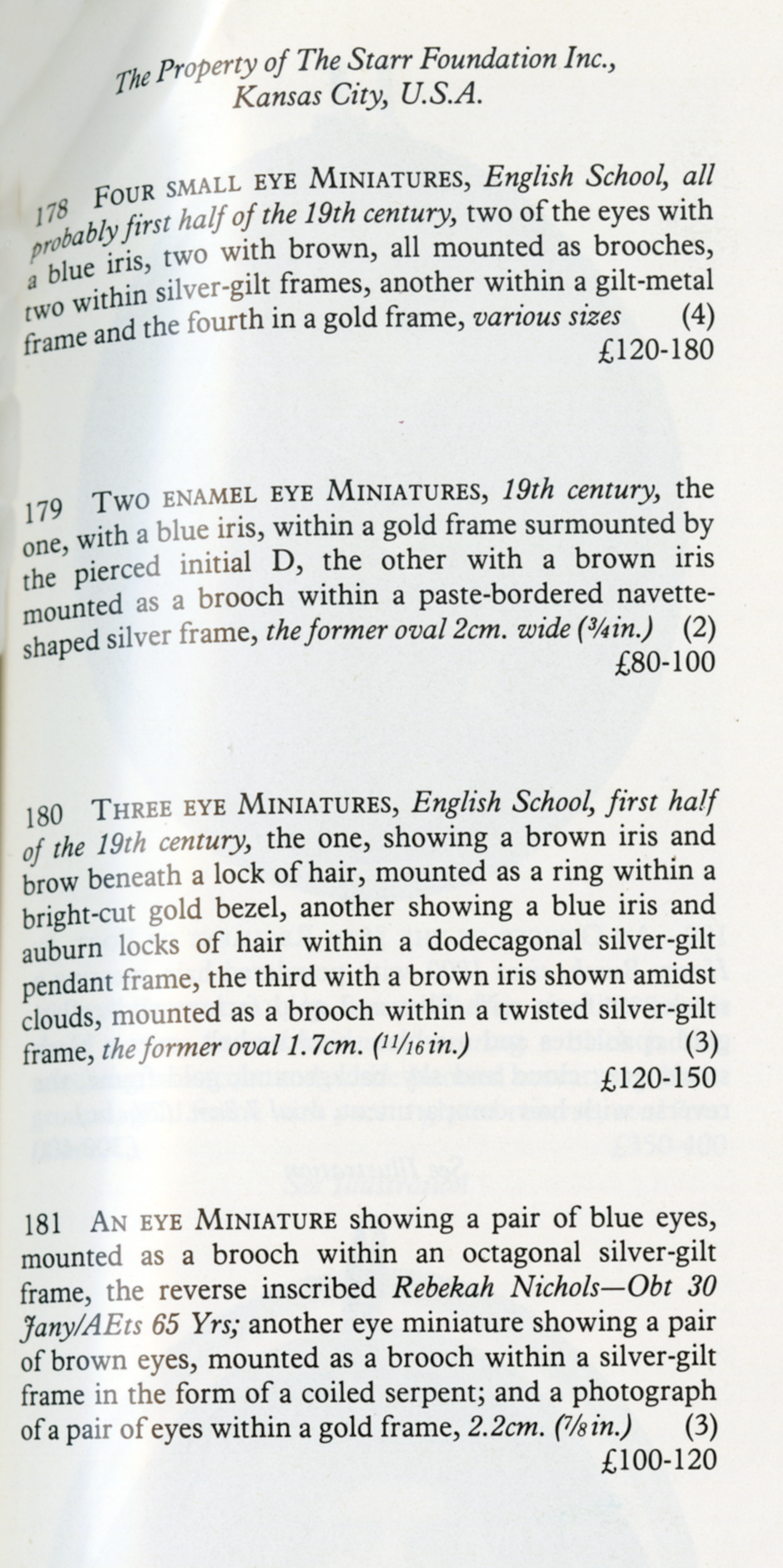Provenance
Mr. John W. (1905–2000) and Mrs. Martha Jane (1906–2011) Starr, Kansas City, MO, by 1982;
Sold at their sale, Catalogue of Fine Portrait Miniatures, Russian Works of Art, and Objects of Vertu, Sotheby’s, London, July 13, 1982, lot 179, as Eye Miniature with Brown Iris [1];
Current location unknown.
Notes
[1] “Two enamel: Enamel miniatures originated in France before their introduction to the English court by enamellist Jean Petitot. Enamel was prized for its gloss and brilliant coloring—resembling the sheen and saturation of oil paintings—and its hardiness in contrast to the delicacy of light sensitive, water soluble miniatures painted with watercolor. Enamel miniatures were made by applying individual layers of vitreous pigment, essentially powdered glass, to a metal support, often copper but sometimes gold or silver. Each color required a separate firing in the kiln, beginning with the color that required the highest temperature; the more colors, the greater risk that the miniature would be damaged by the process. The technique was difficult to master, even by skilled practitioners, leading to its increased cost in contrast with watercolor miniatures. eye miniatures, 19th century, the one, with a blue iris, within a gold frame surmounted by the pierced initial D, the other with a brown iris mounted as a brooch within a paste-bordered navette: Boat-shaped jewelry, often seen as rings from the Victoria era. Not to be confused with marquise jewelry, which often describes the shape of the stone and not the setting. silver frame, the former oval 2 cm. wide (3/4 in.).”
References
Catalogue of Fine Portrait Miniatures, Russian Works of Art, and Objects of Vertu (London: Sotheby’s, July 13, 1982), 43, as Eye Miniature with Brown Iris.
No known related works or exhibitions at this time. If you have additional information on this object, please tell us more.

